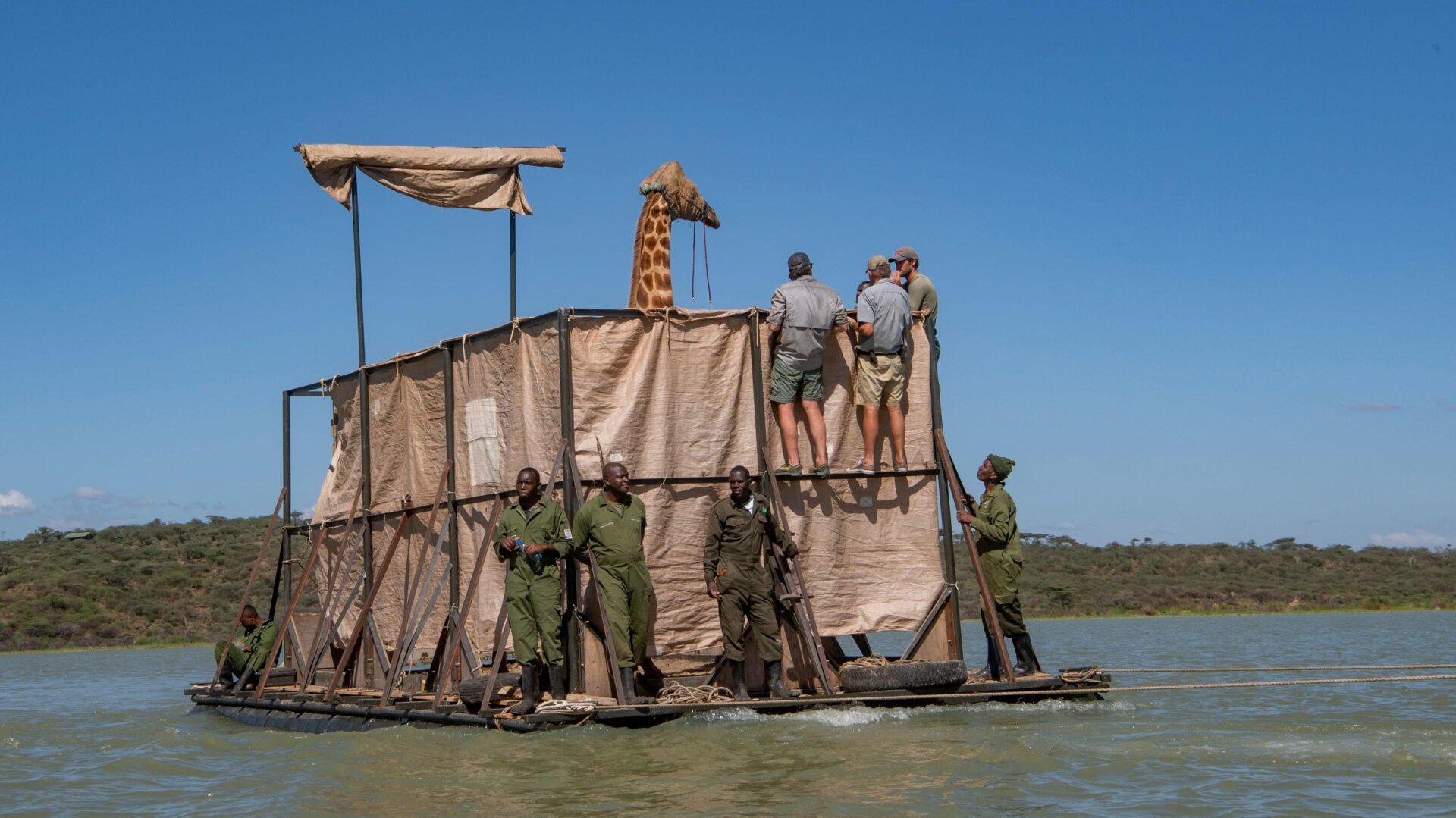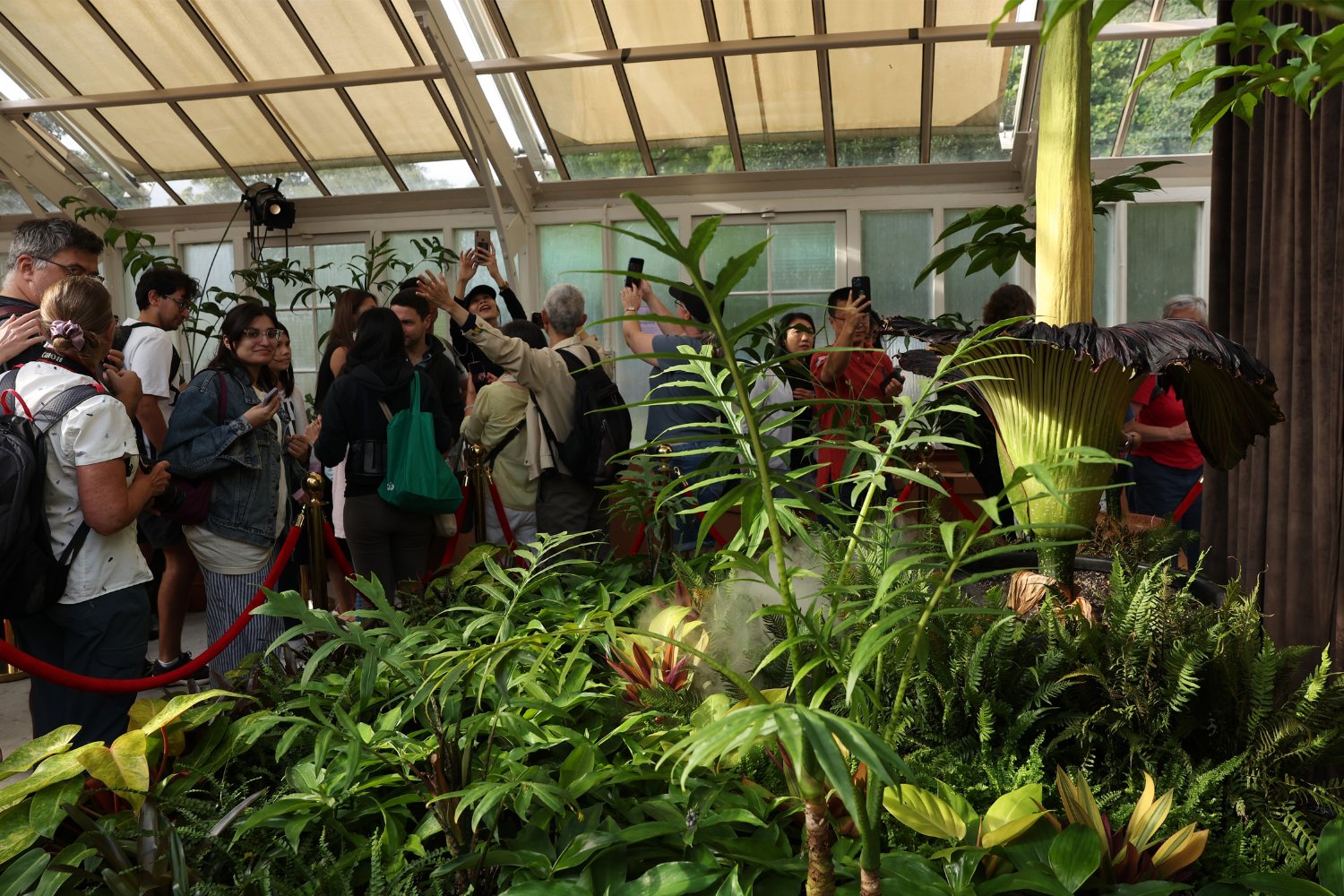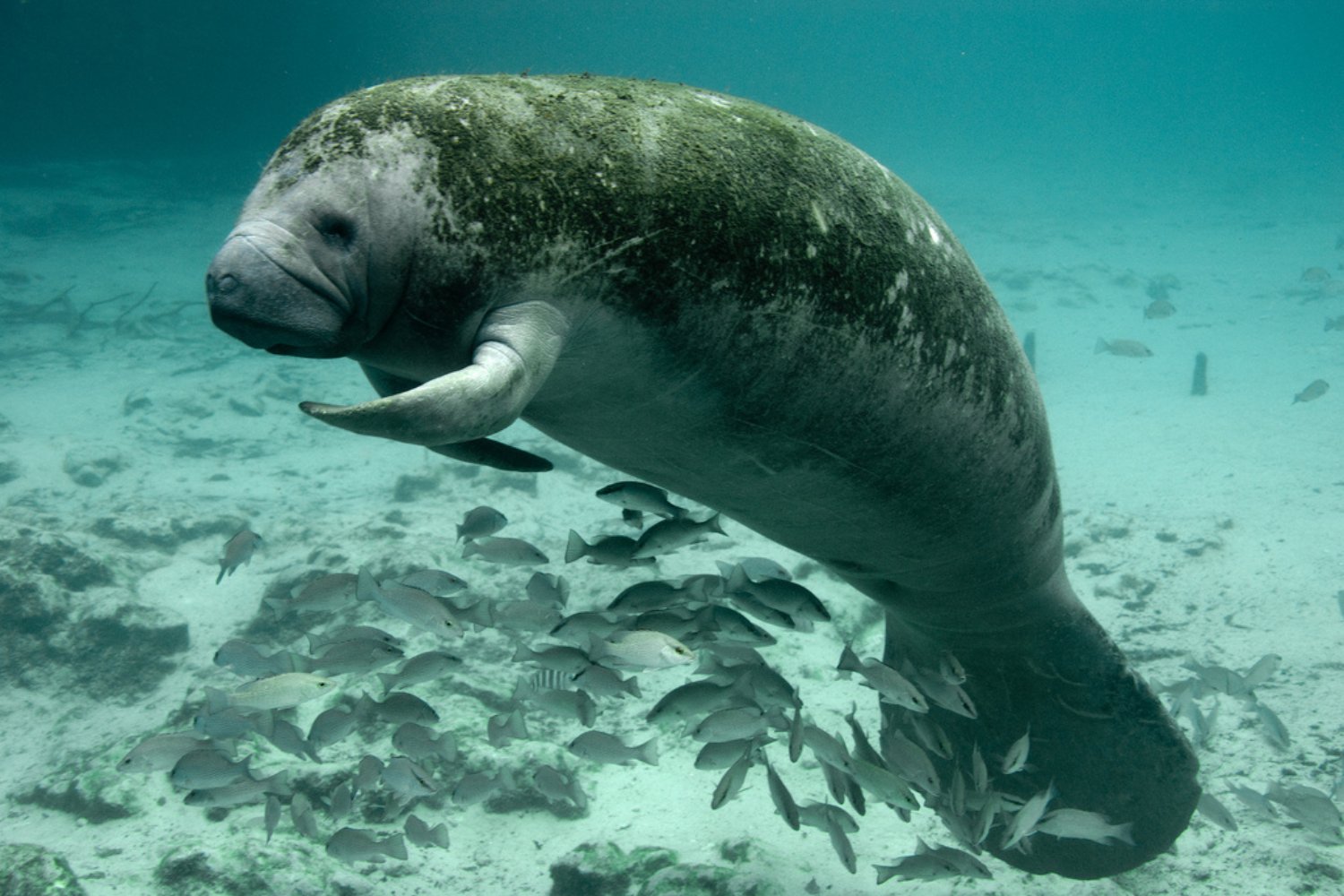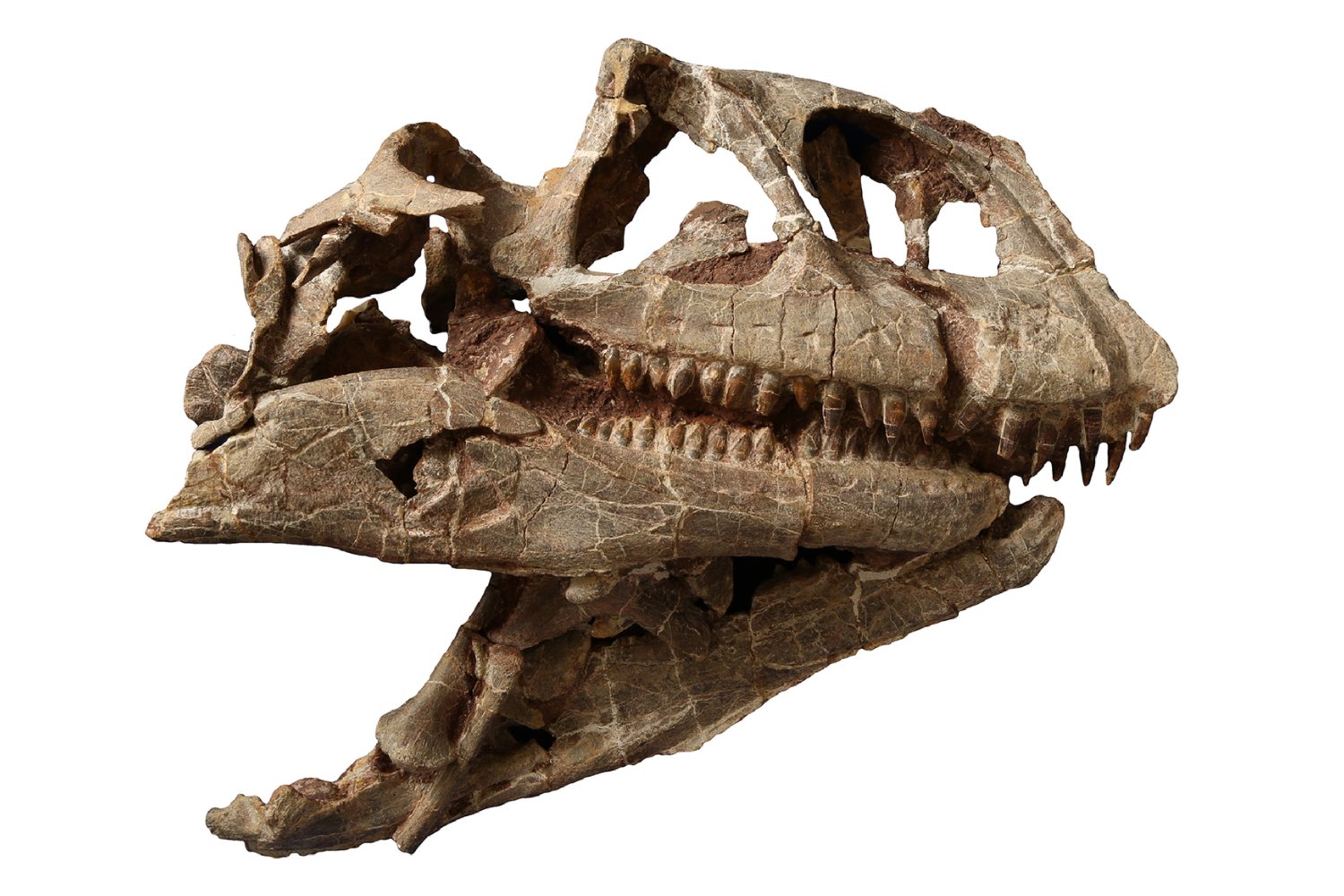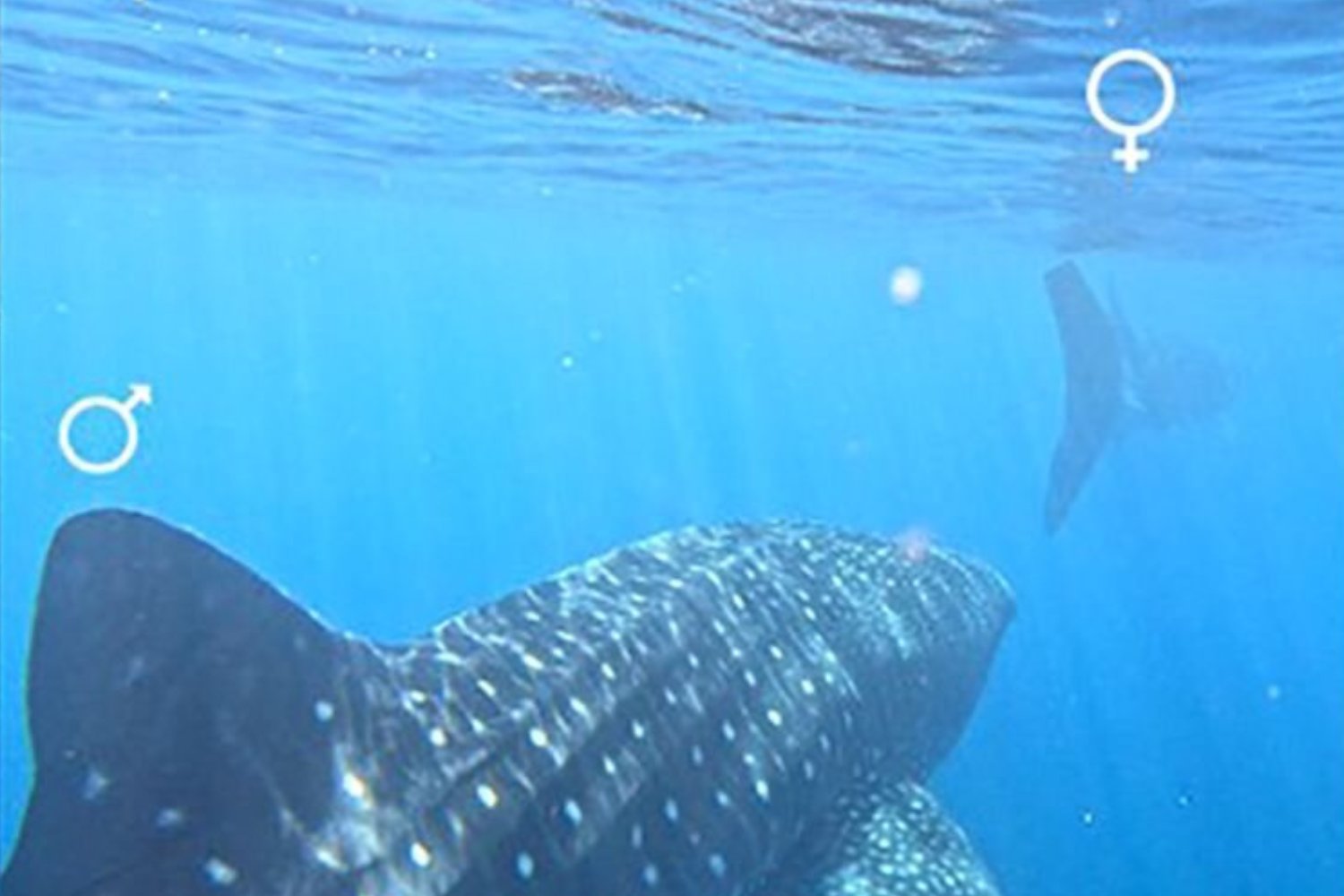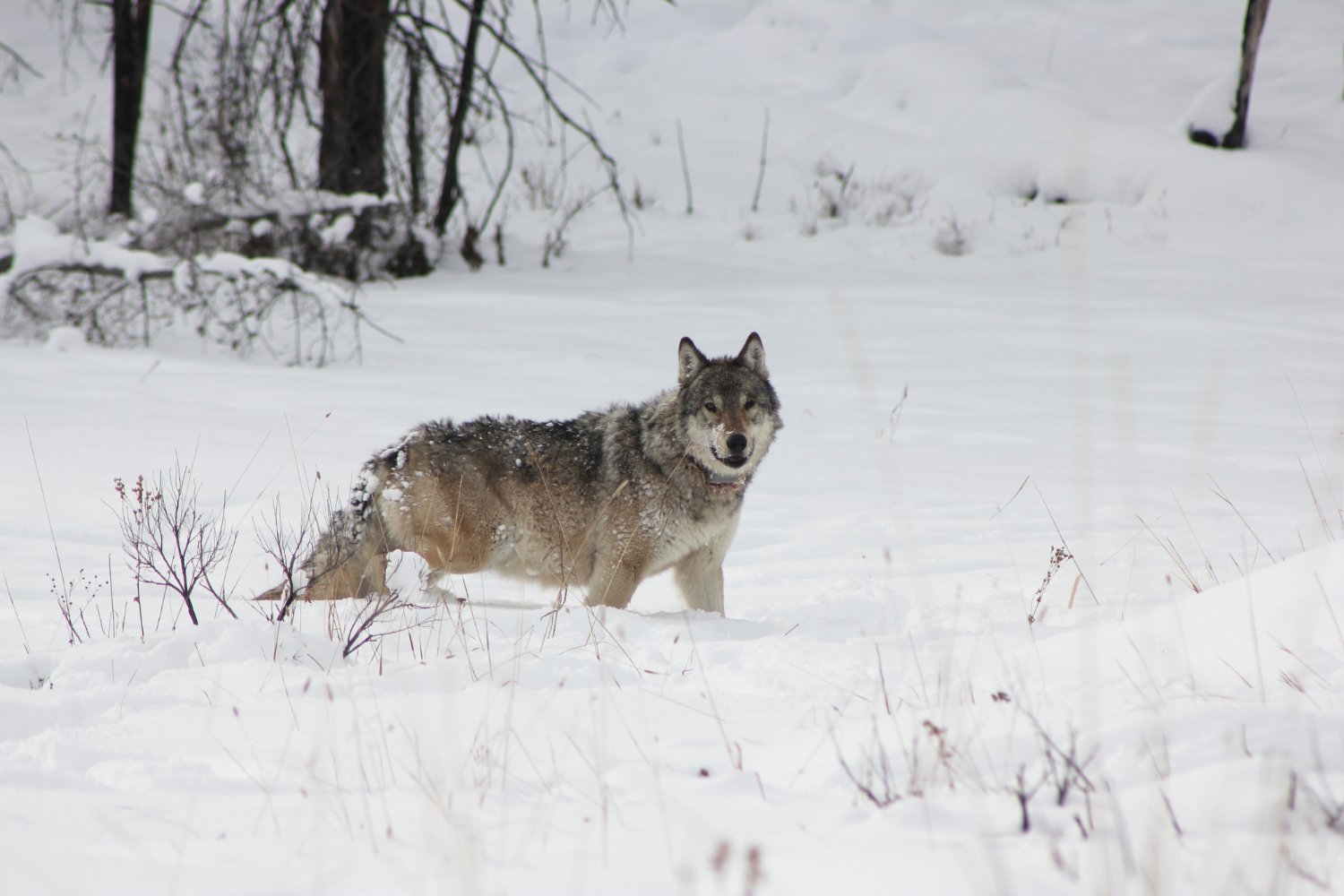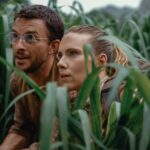Conservationists, government officials, and local community members are banding together to pull off a rescue of eight giraffes stranded on a shrinking island in Kenya. In order to save these animals, they created a giraffe-safe barge to get them across to safe land. They made the first successful rescue of a giraffe named Asiwa today, with more planned in the coming days and weeks.
The population of giraffes in Africa has been declining over the past few decades, due to habitat loss and poaching. But some subspecies of the majestically tall creatures are in more imminent danger than others. One of the most threatened populations is the Rothschild’s giraffe. As little as 1,600 of these giraffes are estimated to still be living in the wild, with up to 800 living in Kenya.
In 2011, some Rothschild’s giraffes were relocated to Longicharo Island in Lake Baringo. At the time, the island’s landmass was larger and connected to the mainland, making it a peninsula. But recent intense flooding around the lake has threatenedboth the nearby wildlife and local villages. That includes eight giraffes that became stuck on the island.
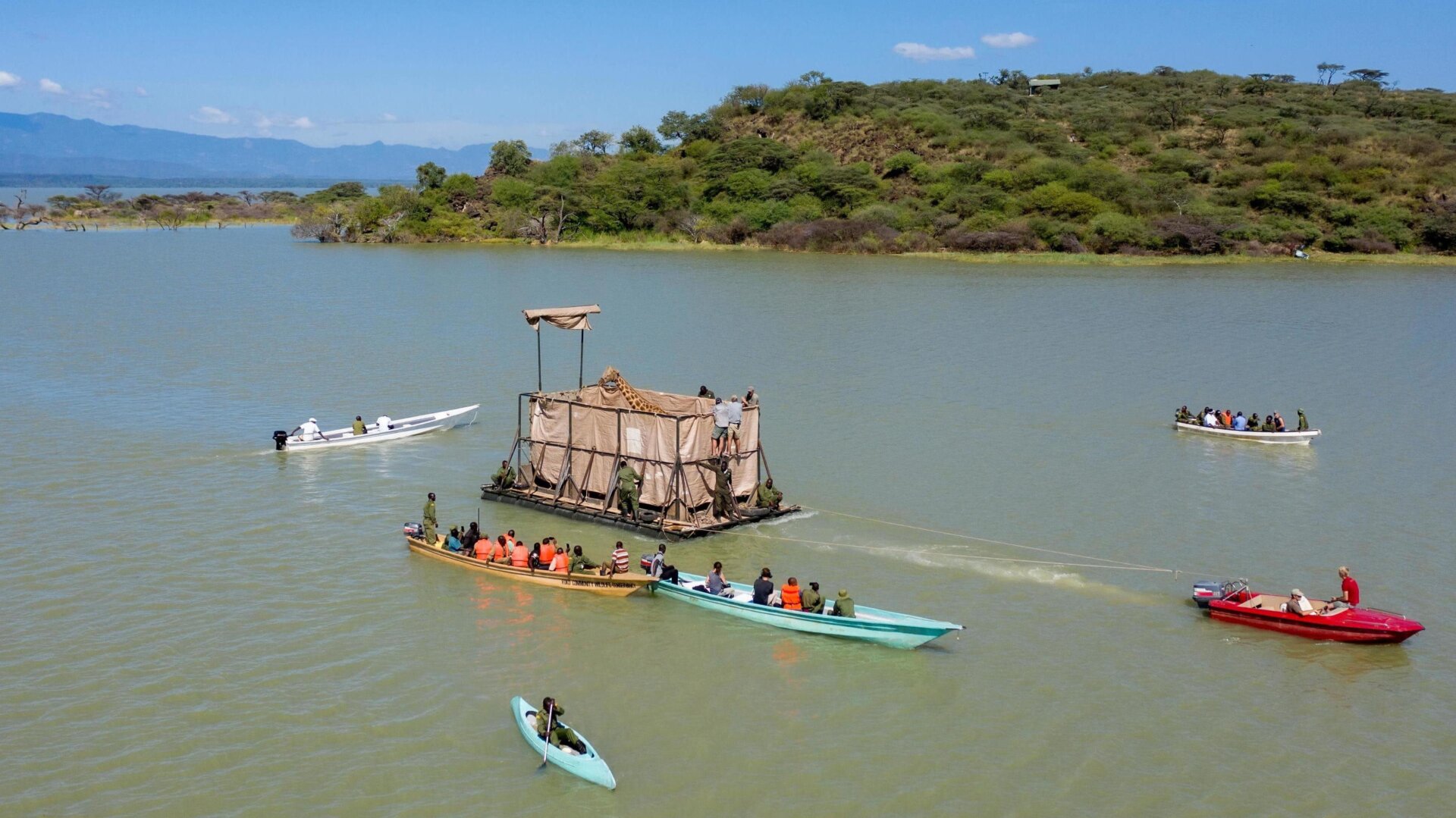
Rangers in the 44,000-acre Ruko Community Wildlife Conservancy—a reserve established in 2006 through a peace brokering between communities in the area—have been traveling to the island, providing the giraffes with extra food and checking on their health. With the threat of more flooding, officials decided to rescue these giraffes and get them back to safer ground before it was too late.
To accomplish that, the Kenya Wildlife Service, the Northern Rangelands Trust float, and the nonprofit organization Save Giraffes Now teamed up with local residents to ferry the giraffes to safety.
“We prepared for months for this move, doing our best to eliminate any risks for the giraffe,” David O’Connor, president of Save Giraffes Now, said in an email.
Getting Asiwa and her fellow giraffes to safety isn’t an easy task, though; the Ruko community built a custom barge for the mission, one that O’Connor calls an engineering marvel.
“The rectangular steel structure was designed and built specifically to carry tall, heavy giraffe,” he said. “The barge floats atop a series of empty drums, for buoyancy. Reinforced sides kept Asiwa from jumping out as the barge was gently maneuvered by boats.”
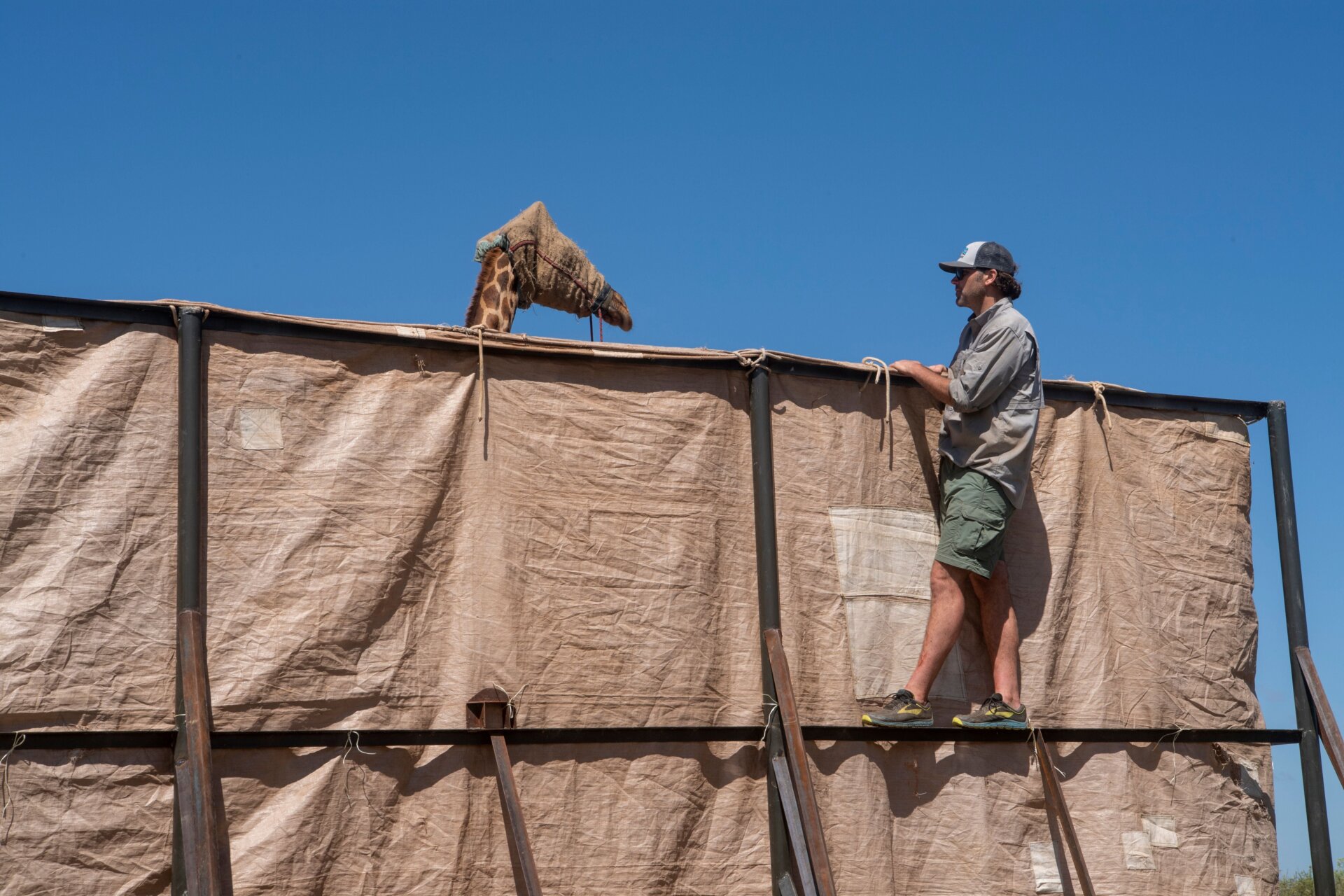
To make sure the giraffes could tolerate the ride, the team tried to familiarize the animals with the sight of the barge over a several-month period. When it was time to escort a sedated Asiwa, her eyes were covered with a hood and she was led to the barge with guide ropes.
All the preparation seems to have worked.
“We sailed Asiwa over a mile of crocodile-ridden waters to the newly established Ruko giraffe sanctuary, and our team was there the whole way to ensure Asiwa was safe,” O’Connor said. The 4,400-acre giraffe sanctuary nestled into the Ruko conservancy was recently completed and includes fencing that should keep Asiwa and her friends safe from predators and other hazards. A 20-person team at the conservancy will also be on hand to protect the animals.
Right now, the game plan is to move the remaining giraffes in the coming days and weeks. Longer term, O’Connor expects that the sanctuary will eventually house even more giraffes, all in hopes of slowly rebuilding their population throughout the area.
